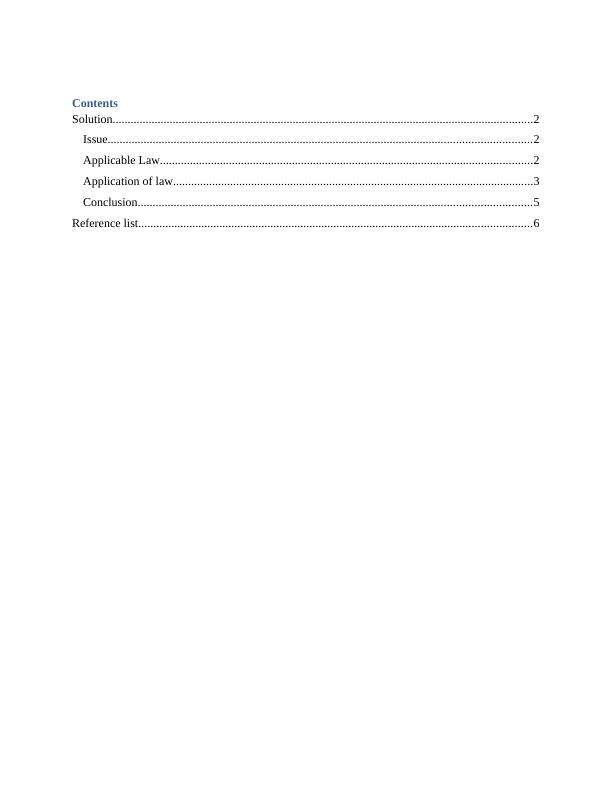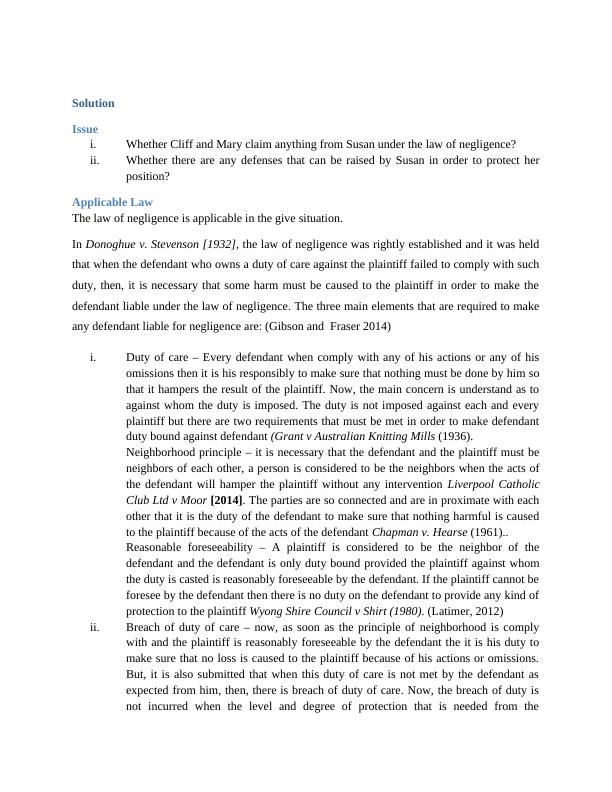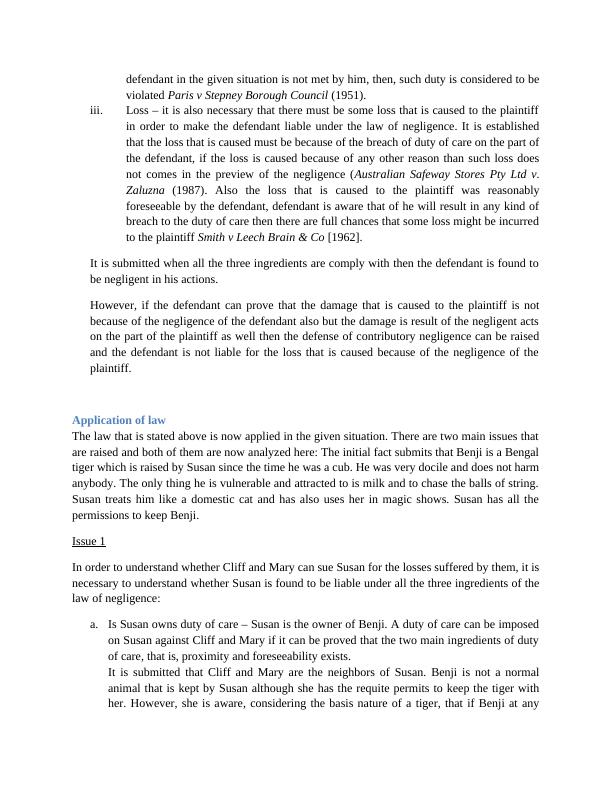Analysis of Negligence in the Case of Susan and Cliff and Mary
Demonstrate knowledge of Australian Business Law, analyze legal issues, interpret legislation and cases, understand compliance and apply law to enterprises.
6 Pages2159 Words53 Views
Added on 2023-06-07
About This Document
This article analyzes the negligence in the case of Susan, Cliff, and Mary under the law of negligence. It discusses the duty of care, breach of duty, and damages caused. It also explores the defenses that can be raised by Susan.
Analysis of Negligence in the Case of Susan and Cliff and Mary
Demonstrate knowledge of Australian Business Law, analyze legal issues, interpret legislation and cases, understand compliance and apply law to enterprises.
Added on 2023-06-07
ShareRelated Documents
End of preview
Want to access all the pages? Upload your documents or become a member.
Negligence Law: Tamara's Case against Aldi Supermarket
|5
|1419
|116
The Law of Negligence
|5
|1203
|132
Legal Issues and Solutions: Negligence and Contract Law
|8
|1980
|252
Liability of Susan under the Law of Negligence
|7
|2328
|465
Legal Advice on Negligence Law for Damage to Property and Mental Shock
|8
|2392
|326
Application of Law - Assignment PDF
|9
|2475
|88



